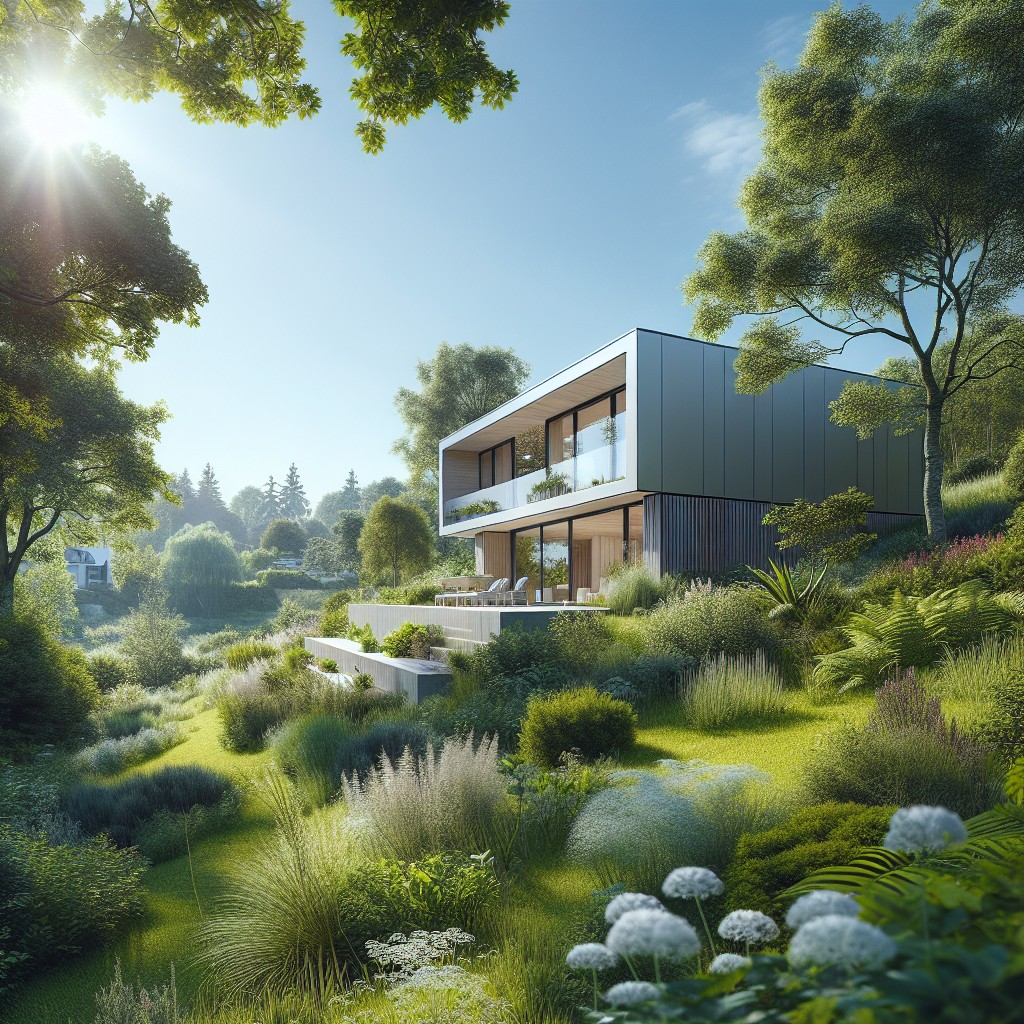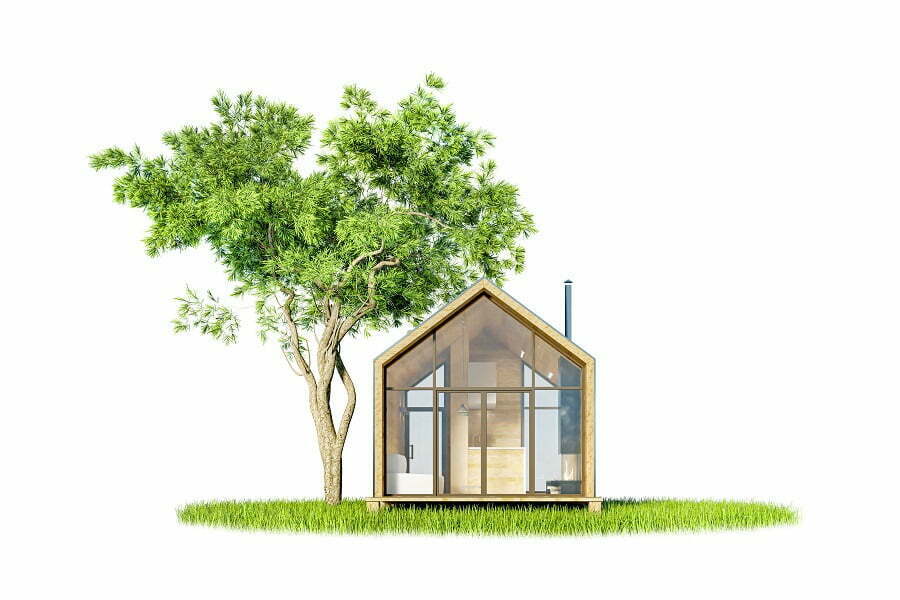Last updated on
In short, most prefab homes have a lifespan of 50 years and more. They can last as long as traditional homes and often beyond.
Today’s prefab homes are built using the same materials as traditional stick-built houses. The innovative technologies that strictly follow federal building codes ensure that these homes can have the same lifespan as traditional homes if not last longer. (MHI)
With proper installation, a manufactured or modular house can last for decades if not centuries! Manufactured homes built according to federal housing standards may be expected to last for 50 years and beyond. This expectancy increases as prefab technology evolves.
Modular homes are built in factories, then shipped to construction sites where they’re assembled on-site. They’re an affordable option for first-time buyers or people who want to build their own house but don’t have the space. This streamlined process contributes to their longevity greatly.
How Long Do Modular Homes Last?

A modular home is a prefabricated building that can be constructed off-site and transported to your property. It’s made of the same materials that traditional houses are made of. Prefab manufacturers follow strict HUD codes. You can expect to live in a modular home for 50 years and more than that.
Of course, factors like material quality, foundation type, and if the structure was built for use affect its longevity.
Prefab Longevity
When designing for longevity, consider the following when choosing construction methods:
- Quality of Materials – What kind of material was used during construction? Foundation
- Type – Is the building built on an existing slab (a concrete pad) or is there no foundation at all?
- Used Condition – If the building has been previously occupied, did previous occupants use proper maintenance techniques?
The best way to ensure long-term durability is to buy a house that has been well maintained by a professional builder.
Modular homes are usually built with metal framing which makes them very durable. Metal framed buildings tend to last longer than wood-framed buildings. However, there are some exceptions such as wooden frame houses. Wooden frame houses are prone to rot and decay over time.
Wooden frame houses should not be considered long-lasting unless they were constructed using high-quality materials and properly installed.
If you decide to build a custom home, you will have to do additional research to find out what kind of materials will work best for your project.
There are many factors to consider when selecting construction materials. The most important thing to remember is that the materials must be strong enough to withstand the forces exerted by wind, snow, rain, earthquakes, etc.
You may want to consider a steel frame for your new home if you live in an area where heavy winds are common. Steel frames are stronger than wood frames and can better withstand extreme weather conditions.
Steel frames are also more expensive than wood frames. You may want to consider buying a prefabricated steel frame kit instead of purchasing a fully assembled steel frame.
This will save you money and reduce the amount of labor required to assemble the structure.
Another option is to purchase a pre-assembled steel frame from a manufacturer. These kits come complete with everything needed to construct the frame including lumber, fasteners, and other supplies.
A third option is to hire a contractor who specializes in building custom steel frame homes. Contractors often offer free design services so that you can get a sense of how your home will appear once completed.
Factors That Contribute to Prefab Longevity
If you’re looking for a long-lasting home, look into prefabricated modular homes. Prefabricated modular homes are made up of individual components that are shipped to the job site and then put together.
Prefabricated modular homes can be purchased in different sizes ranging from small one-bedroom units to large three-bedroom models.
Metal Frame Construction
Most prefabricated modular homes are manufactured from either aluminum or steel. Aluminum is lighter weight but it tends to rust after extended exposure to moisture.
Steel prefabs are much sturdier and they don’t rust. They are also heavier than aluminum prefabs.
Aluminum prefabs are typically cheaper than steel prefabs. Steel prefabs are typically more expensive than aluminum prefabs. This is because steel prefabs require more skilled labor and higher overhead costs.
Energy Codes
Most prefabricated modular houses are designed to meet current energy codes.
The National Association of Home Builders has published guidelines for designing and constructing energy-efficient homes. These guidelines include recommendations for heating and cooling systems, insulation levels, windows, doors, roofing materials, lighting, appliances, plumbing fixtures, and exterior finishes.
Energy efficiency is becoming increasingly important in today’s economy. It is estimated that Americans spend about $1 trillion each year on utilities. By reducing our dependence on fossil fuels we can help lower utility bills and improve our environment.
Recycled Materials
Many prefabricated modular builders use recycled materials whenever possible. Recycled materials are less expensive than traditional materials. They also have a positive environmental impact since they are usually produced locally.
When choosing a prefabricated modular home builder, make sure that the company uses high-quality materials. Look at their track record and ask them questions before making any decisions.
Factors that Can Shorten the Prefab Lifespan
Consider these factors that can shorten the longevity of any prefab construction.
Wear and Tear
One factor that affects the longevity of a prefabricated house is wear and tear. The longer a prefabricated home sits idle, the more likely it is to suffer damage. Poorly installed foundations can cause structural problems such as settling and cracking. If these problems aren’t addressed immediately, they can lead to costly repairs later.
Weather Conditions
Prefabricated modular homes must be built under controlled conditions. For example, if a home is being constructed in an area where there is heavy snowfall, it may not be feasible to finish the project until springtime.
Obsolescence
In some cases, new building codes will render older designs obsolete. In other cases, newer design standards may become available. Prefabricated modular homes should always be able to adapt to changing circumstances.
Aesthetics
Some people prefer modern architecture while others like the Victorian style. Some people want a single-story home while others want a multi-story home. When selecting a prefabricated module builder, take aesthetics into consideration.
Maintenance Cost
It is often difficult to predict how long a prefabricated structure will last. However, you can estimate the average life span of prefabrication by looking at the cost of maintenance. Maintenance includes things like painting, cleaning, repairing leaks, replacing siding, etc.
If you choose a prefabricated housing option that requires little maintenance, you’ll save money over time.
Government Intervention
If your state or local government imposes regulations on prefabricated houses, you may need to comply with those requirements. You might find that it is cheaper to build your own home rather than pay extra fees to a prefabricated dealer.
FAQ
There are many differences between a new build and a prefabricated home. New builds are constructed by contractors who specialize in building homes. Contractors must follow strict building codes and regulations which govern the type of materials used, the size and shape of the home, and the methods used to construct the home.
Yes, you can sell a prefab house. A lot of people buy prefabricated homes as investment property. Some people even buy prefabricated houses as vacation homes. You can find lots of information about buying a prefabricated house online.
Most prefabricated structures are built with concrete footings and foundations. More so, prefab homes have to follow strict federal safety codes that ensure they can withstand the elements.
Related reading:
Table of Contents





